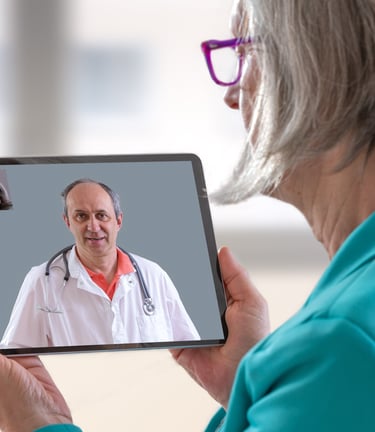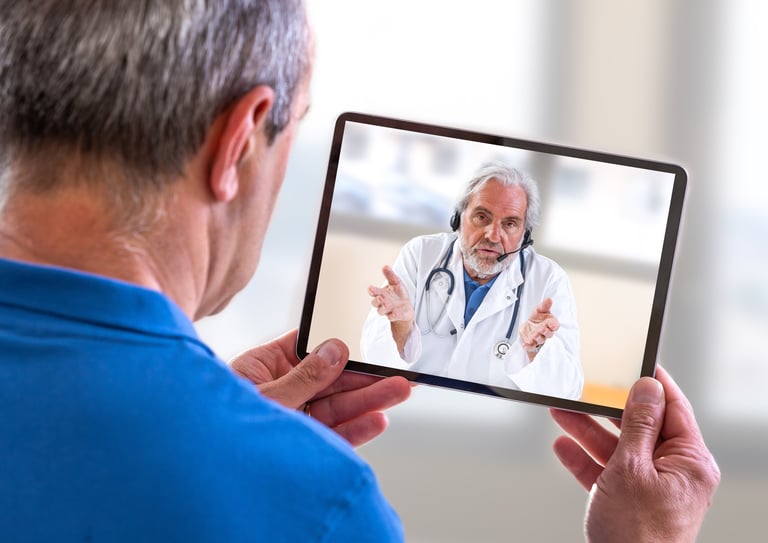Suboxone Clinic
NORTH CAROLINA
The opioid crisis continues to be a major public health issue across the United States, including in North Carolina. With the rising number of individuals struggling with opioid dependency, effective and medically supported treatment options are essential. One of the most effective medications used to combat opioid addiction is Suboxone. This article will explore the ins and outs of Suboxone treatment, how to find the right clinic in North Carolina, and how Suboxone telehealth options can make treatment even more accessible.
Online addiction clinic
What is a Suboxone Doctor?
A Suboxone doctor is a medical professional who specializes in treating opioid addiction. These doctors are licensed and trained to prescribe Suboxone, a medication that combines buprenorphine and naloxone to manage opioid cravings and withdrawal symptoms. Suboxone works by reducing the intense physical symptoms associated with opioid withdrawal, allowing patients to focus on their recovery.
Suboxone doctors offer more than just medication; they develop customized treatment plans that often include counseling and therapy to address the mental and emotional aspects of addiction.


HOW IT WORKS




STEP 1: Schedule an appointment
STEP 2: See an online doctor
STEP 3: Pick up your script at the pharmacy
What Makes a Suboxone Doctor Qualified?
To prescribe Suboxone, a physician must receive specific training and certification from the Drug Enforcement Administration (DEA). This ensures that the doctor understands the intricacies of Suboxone treatment, how it works, potential side effects, and how to monitor the patient throughout their recovery.
When searching for a Suboxone clinic near me, it’s essential to ensure that the doctors at the clinic have the necessary certifications to provide safe and effective treatment.
How to Find the Best Suboxone Clinic in North Carolina
Selecting the right Suboxone clinic is crucial for a successful recovery. In North Carolina, there are many clinics offering Suboxone treatment, but not all clinics are created equal. A reputable clinic will not only provide medication but also offer comprehensive addiction care, including counseling, behavioral therapy, and regular follow-up visits.
What Happens at a Suboxone Clinic?
At a Suboxone clinic, the first step in your treatment journey is a thorough assessment. During this assessment, the doctor will evaluate your medical history, the severity of your addiction, and other relevant factors to create a personalized treatment plan. Based on your needs, the doctor will prescribe Suboxone to help manage withdrawal symptoms and reduce cravings.
Along with medication, high-quality clinics often provide:
Therapy and Counseling Services: These services help address the underlying psychological triggers of addiction.
Behavioral Therapies: Therapy can help modify behaviors associated with drug use.
Support Systems: Peer support groups are a vital part of the recovery process.
Some clinics also incorporate holistic approaches, offering services such as nutrition advice, fitness programs, and mental health evaluations to support full-body wellness during recovery.
Key Benefits of Suboxone Treatment
Reduced Withdrawal Symptoms: Suboxone helps significantly lessen the severity of withdrawal, making the recovery process more manageable.
Lower Overdose Risk: The buprenorphine component in Suboxone acts as a partial opioid agonist, meaning it has a ceiling effect that reduces the risk of overdose.
Improved Day-to-Day Functioning: Suboxone treatment allows patients to regain control over their lives, enabling them to focus on rebuilding their relationships, careers, and personal well-being.
Locating Suboxone Clinics in North Carolina
If you're searching for a Suboxone clinic near me in North Carolina, you'll find numerous options, particularly in larger cities like Raleigh, Charlotte, and Wilmington. These clinics offer personalized care plans and prioritize getting you started on your treatment quickly.
Additionally, many clinics offer flexible hours to accommodate patients with busy schedules, and some even provide telehealth services, making treatment more accessible for individuals who may have limited mobility or live in rural areas.
(404) 436-1362
SCHEDULE YOUR APPOINTMENT TODAY!
Suboxone Telehealth: A Convenient Option for Addiction Treatment
With the rise of Suboxone telehealth, addiction treatment has become more accessible to patients who may not be able to visit a clinic in person. Telehealth allows individuals to receive comprehensive Suboxone treatment through virtual appointments with certified doctors. This is a valuable option for those who live far from a clinic or who prefer the privacy of receiving treatment from home.
What is Suboxone Telehealth?
Suboxone telehealth refers to receiving treatment remotely through online platforms. This typically includes virtual consultations, treatment planning, and follow-up appointments with your doctor—all from the comfort of your home. Patients can still receive prescriptions and track their progress without needing to visit a clinic in person.
Advantages of Suboxone Telehealth
Greater Accessibility: People in rural areas or those with transportation issues can still receive high-quality care.
Increased Privacy: Some individuals may feel more comfortable receiving treatment in a private setting rather than visiting a clinic.
More Flexibility: Telehealth allows patients to schedule appointments that fit into their daily routines without needing to commute to a clinic.
Finding a Suboxone Clinic Online
For those looking for a Suboxone clinic online, it's crucial to ensure that the clinic is licensed and employs certified doctors. Many North Carolina clinics now offer telehealth services, providing the same level of care as in-person visits. The process generally involves filling out an intake form, scheduling an online consultation, and receiving your prescription via a local pharmacy.
Online Suboxone clinics also offer comprehensive services, such as therapy and counseling, ensuring that patients receive holistic support throughout their treatment journey.
The Treatment Process at a Suboxone Clinic
Here’s what you can expect when starting treatment at a Suboxone clinic:
1. Initial Consultation and Assessment
The first step is a detailed consultation where your doctor will evaluate your opioid use history, any mental health conditions, and your overall health. This information is used to create a customized treatment plan tailored to your specific needs.
2. Induction Phase
During the induction phase, the doctor will initiate your Suboxone treatment. This stage is closely monitored to ensure that the medication is effective and that you're comfortable. Your doctor may adjust your dosage during this phase to find the amount that works best for you.
3. Maintenance Phase
Once the right dosage is determined, you'll enter the maintenance phase. This stage focuses on long-term stability and recovery. Patients continue taking Suboxone while participating in ongoing therapy and counseling. The goal is to minimize cravings, prevent relapse, and help patients reintegrate into society.
4. Tapering Off Suboxone (Optional)
For some individuals, long-term Suboxone use is necessary. Others may choose to eventually taper off the medication under the guidance of their doctor. This is done gradually to prevent withdrawal symptoms and ensure a smooth transition to a medication-free life.
How to Choose the Right Suboxone Clinic Near Me
When searching for a Suboxone clinic near me, consider these important factors:
Qualified Doctors: Ensure that the clinic has certified Suboxone doctors.
Comprehensive Care: Look for clinics that offer a full range of services, including therapy and behavioral health support.
Telehealth Options: If in-person visits are challenging, choose a clinic that offers telehealth appointments.
Reputation: Look for clinics with positive reviews and a solid reputation for treating opioid addiction.
Conclusion: Take the First Step Toward Recovery Today
Opioid addiction is a serious and life-altering condition, but with the right support, recovery is within reach. Whether you're searching for an in-person Suboxone clinic near me in North Carolina or considering Suboxone telehealth options, seeking help is the first step toward reclaiming control over your life.
Don’t let opioid addiction dictate your future. Reach out to a trusted Suboxone clinic today and start your journey toward a healthier, addiction-free life.
Is Suboxone good for pain?
Suboxone is primarily used for the treatment of opioid dependence and addiction. It contains a combination of buprenorphine, a partial opioid agonist, and naloxone, which helps prevent misuse of the medication. While Suboxone may have some analgesic (pain-relieving) properties due to the presence of buprenorphine, it is not typically prescribed for the management of acute or chronic pain.
When it comes to pain management, there are more suitable medications available. Buprenorphine itself can be used for pain relief in certain situations, but usually in different formulations or doses than those found in Suboxone. If you are experiencing pain, it is best to consult with a healthcare professional who can evaluate your condition and recommend appropriate pain management strategies or medications. They will consider your specific needs and medical history to determine the most suitable course of treatment for you.
How do you take SUBOXONE film?
Suboxone film is a medication used to treat opioid dependence. It contains two active ingredients, buprenorphine, and naloxone. When taking Suboxone film, it's important to follow the prescribed instructions provided by your healthcare professional. However, I can provide you with general guidelines for taking Suboxone film:
Wash your hands thoroughly with soap and water to ensure cleanliness.
Open the individually wrapped Suboxone film pouch just before use. Make sure your hands are dry to avoid damaging the film.
With dry hands, remove the film from the pouch by tearing along the perforation. Be careful not to push the tablet through the foil.
Place the film under your tongue, against the inside of your cheek, or in the deepest part of your lower gumline. The film will dissolve on its own. Do not chew, swallow, or move the film around with your tongue while it is dissolving.
Wait for the film to completely dissolve. This usually takes 5 to 10 minutes. Avoid eating or drinking during this time to allow for proper absorption.
After the film has dissolved, avoid rinsing your mouth or spitting for at least 30 minutes to allow the medication to be fully absorbed.
Dispose of the used film properly. Fold the film in half and place it back into the pouch. Dispose of it safely to prevent accidental ingestion by others.
Suboxone Questions
What kind of drug is SUBOXONE?
SUBOXONE is a medication that is primarily used in the treatment of opioid dependence. It is a prescription medication that combines two active ingredients: buprenorphine and naloxone.
Buprenorphine is a partial opioid agonist, which means it binds to the same receptors in the brain that opioids do but produces a less intense effect. By activating these receptors, buprenorphine helps to alleviate withdrawal symptoms and reduce cravings for opioids. It also has a ceiling effect, meaning that after a certain dose, it does not produce further significant opioid effects, which can help reduce the risk of overdose.
Naloxone is an opioid antagonist, which means it blocks the effects of opioids by binding to the same receptors but without activating them. It is primarily included in SUBOXONE to deter misuse. When taken as directed (sublingually, or under the tongue), naloxone has limited effect. However, if the medication is crushed and injected, the naloxone component can cause withdrawal symptoms in individuals who are dependent on opioids.
SUBOXONE is often prescribed as part of a comprehensive treatment program for opioid dependence, which may include counseling, behavioral therapies, and support services. It helps individuals reduce their dependence on opioids and manage their addiction in a controlled and supervised manner.
When should I start taking SUBOXONE?
Suboxone is a prescription medication used in the treatment of opioid addiction. It contains a combination of buprenorphine and naloxone and is typically used as part of a comprehensive treatment program that includes counseling and behavioral therapy.
The decision of when to start taking Suboxone should be made in consultation with a qualified healthcare professional, such as a doctor or addiction specialist. They will assess your individual situation, taking into account factors like the severity of your opioid addiction, your overall health, and any other medications you may be taking.
In general, Suboxone is often started when a person is in the early stages of opioid withdrawal, once the effects of the opioids have started to wear off. It is typically recommended to begin Suboxone treatment under medical supervision to ensure its safe and effective use.
It's important to remember that Suboxone is a medication that should be taken exactly as prescribed by your healthcare provider. It is crucial to follow their instructions and work closely with them throughout your treatment journey. They will provide guidance on dosage, duration of treatment, and any necessary adjustments to your plan.
What kind of drug is SUBOXONE?
Suboxone is a medication used in the treatment of opioid dependence and addiction. It contains two active ingredients: buprenorphine and naloxone.
Buprenorphine is a partial opioid agonist, meaning it activates the same receptors in the brain that are targeted by opioids but produces a weaker effect. It helps reduce withdrawal symptoms and cravings for opioids by binding to these receptors and stabilizing them. By occupying the receptors, buprenorphine blocks the effects of other opioids, preventing their euphoric and addictive effects.
Naloxone, the second active ingredient in Suboxone, is an opioid antagonist. It is included in the medication to deter misuse. If Suboxone is crushed and injected, the naloxone component can cause immediate withdrawal symptoms. However, when taken as directed by mouth (sublingually), naloxone has limited absorption and does not produce significant effects. It serves as a safety measure to discourage improper use of the medication.
Together, buprenorphine and naloxone in Suboxone help individuals with opioid dependence manage their withdrawal symptoms, reduce cravings, and stabilize their opioid receptors, allowing them to focus on recovery without experiencing the intense highs and lows associated with opioids. It is typically used as part of a comprehensive treatment program that includes counseling and psychosocial support.
Is it better to take Suboxone once a day?
Suboxone is a medication commonly used in the treatment of opioid dependence. It contains a combination of buprenorphine and naloxone. The specific dosing regimen for Suboxone can vary depending on individual circumstances and the recommendations of a healthcare professional.
In most cases, Suboxone is initially prescribed once a day. This allows for a steady level of the medication in the body and can help to reduce withdrawal symptoms and cravings associated with opioid dependence. However, the exact dosing schedule and frequency may be adjusted based on an individual's response to the medication.
Does buprenorphine alone cause precipitated withdrawals?
No, buprenorphine alone does not typically cause precipitated withdrawals. Precipitated withdrawals occur when a person who is physically dependent on full opioid agonists, such as heroin or oxycodone, suddenly takes a partial opioid agonist like buprenorphine. The partial agonist binds to opioid receptors in the brain and displaces the full agonist, leading to acute withdrawal symptoms.
Buprenorphine is unique in its pharmacology because it is a partial opioid agonist with high affinity for opioid receptors. This means that it can displace other opioids from the receptors but only partially activates them, resulting in less intense opioid effects. The high affinity of buprenorphine allows it to effectively block other opioids from binding to the receptors, reducing withdrawal symptoms.
However, if a person is already taking buprenorphine as part of their opioid dependence treatment and they take a full opioid agonist on top of it, this can potentially lead to a loss of buprenorphine's therapeutic effect and may result in withdrawal symptoms. It is important for individuals on buprenorphine treatment to abstain from using other opioids to avoid the risk of precipitated withdrawals.
What are the side effects of Suboxone?
Suboxone is a medication used in the treatment of opioid addiction and contains two active ingredients: buprenorphine and naloxone. Like any medication, Suboxone can have side effects. Common side effects may include:
Nausea and vomiting
Constipation
Headache
Insomnia or sleep disturbances
Sweating
Dizziness
Weakness or fatigue
Back pain
Anxiety or nervousness
Depression or mood swings
Stomach pain
Irregular heartbeat
Difficulty concentrating
Respiratory problems (although these are rare)
It's important to note that not everyone will experience these side effects, and some individuals may experience different or additional side effects. Additionally, the severity and duration of side effects can vary from person to person.
Does Suboxone prevent relapse?
Suboxone (buprenorphine/naloxone) is a medication commonly used in the treatment of opioid addiction. It is an opioid partial agonist, meaning it activates the opioid receptors in the brain to a lesser degree compared to full opioid agonists like heroin or oxycodone. Suboxone helps to reduce opioid cravings and withdrawal symptoms, allowing individuals to stabilize their lives and engage in addiction treatment.
When used as part of a comprehensive treatment program, Suboxone can be effective in reducing the risk of relapse. However, it's important to note that Suboxone alone is not a cure for addiction, and individual results may vary. Successful recovery from opioid addiction usually involves a combination of medication-assisted treatment (such as Suboxone), counseling or therapy, and support from a healthcare professional or addiction specialist.
Suboxone can provide several benefits in preventing relapse:
Reduced cravings: Suboxone helps to alleviate the intense cravings associated with opioid withdrawal. By managing cravings, it can reduce the likelihood of relapse.
Withdrawal symptom management: Suboxone can alleviate the physical symptoms of opioid withdrawal, making it easier for individuals to stay in treatment and resist the urge to use opioids.
Blockade effect: The naloxone component of Suboxone serves as an antagonist, blocking the effects of other opioids. This deterrent effect discourages individuals from using opioids while taking Suboxone, as they will not experience the same euphoric effects.
Stability and structure: Suboxone provides stability by allowing individuals to function without experiencing the extreme highs and lows associated with opioid abuse. This stability, combined with ongoing treatment and support, can help individuals maintain their recovery and reduce the risk of relapse.
How many Suboxone strips a day?
The dosage and frequency of Suboxone strips should be determined by a medical professional based on an individual's specific needs and circumstances. Suboxone is a medication used in the treatment of opioid addiction and contains a combination of buprenorphine and naloxone. The appropriate dosage will depend on factors such as the severity of the addiction, the individual's response to the medication, and any other relevant medical considerations.
Typically, the initial dosage of Suboxone is lower, and it is gradually adjusted to achieve the desired therapeutic effect. It's important to follow the prescribing doctor's instructions and not exceed the recommended dosage. Misuse or improper administration of Suboxone can have adverse effects and may be dangerous.
Is Suboxone a good pain reliever?
Suboxone (buprenorphine/naloxone) is primarily used in the treatment of opioid addiction and dependence, particularly for individuals who are undergoing medication-assisted treatment (MAT). It contains buprenorphine, a partial opioid agonist, and naloxone, an opioid antagonist.
While Suboxone can help manage pain to some extent due to its partial agonist properties, it is not typically prescribed as a first-line treatment for pain relief. Its primary purpose is to alleviate withdrawal symptoms and reduce cravings for opioids in individuals with opioid addiction.
For pain management, there are more suitable options available, such as traditional opioid analgesics like morphine, oxycodone, or non-opioid alternatives such as nonsteroidal anti-inflammatory drugs (NSAIDs), acetaminophen, or other prescription medications specifically designed for pain relief.
How do you prevent precipitated withdrawal?
To prevent precipitated withdrawal, which occurs when opioid-dependent individuals experience sudden and severe withdrawal symptoms after the administration of opioid antagonists or partial agonists, it's important to follow appropriate protocols. Here are some steps to minimize the risk of precipitated withdrawal:
Comprehensive Assessment: Conduct a thorough assessment of the individual's opioid use history, including the type and duration of opioids used, to determine the appropriate course of action.
Opioid-free Period: Ensure that the person is in a state of opioid withdrawal before initiating treatment with opioid antagonists or partial agonists. This typically involves waiting for a sufficient amount of time after the last use of short-acting opioids and longer for long-acting opioids.
COWS or CIWA-Ar Scale: Use validated assessment scales such as the Clinical Opiate Withdrawal Scale (COWS) for opioids or the Clinical Institute Withdrawal Assessment for Alcohol (CIWA-Ar) for alcohol to evaluate the severity of withdrawal symptoms. These scales help guide the decision-making process and determine the appropriate time to initiate treatment.
Naloxone Challenge Test: In some cases, a naloxone challenge test may be performed to assess the patient's level of opioid dependence. This test involves administering a small dose of naloxone, an opioid antagonist, and observing the response. If withdrawal symptoms occur, it indicates that the individual is opioid-dependent and requires careful management to prevent precipitated withdrawal.
Gradual Induction: When initiating treatment with opioid antagonists or partial agonists, start with a low dose and gradually titrate up to the therapeutic dose. This allows the individual's body to adjust and minimizes the risk of precipitated withdrawal.
Timing: Ensure that a sufficient amount of time has passed since the last opioid use before administering opioid antagonists or partial agonists. The exact duration depends on the specific opioids used and their half-lives.
Use of Short-Acting Opioids: If possible, switch the individual to short-acting opioids for a period of time before transitioning to opioid antagonists or partial agonists. Short-acting opioids tend to clear the system more rapidly, reducing the risk of precipitated withdrawal.
Medical Supervision: Monitor the individual closely during the induction phase, especially in a controlled medical setting. This allows for prompt intervention and management of any potential complications or withdrawal symptoms that may arise.
What is the instruction on taking Suboxone?
Suboxone is a prescription medication used in the treatment of opioid dependence. It contains a combination of two active ingredients: buprenorphine and naloxone. The medication comes in the form of sublingual tablets or films that are placed under the tongue for absorption. Here are some general instructions on taking Suboxone:
Prescription and Dosage: Suboxone should only be taken under the supervision of a qualified healthcare professional who will prescribe the appropriate dosage for you based on your individual needs. Follow your doctor's instructions carefully and do not exceed the recommended dosage.
Administration: Suboxone tablets or films should be placed under the tongue, against the inside of the cheek, or in the upper or lower gums. They should not be swallowed or chewed, as the medication needs to be absorbed through the mucous membranes in the mouth.
Preparation: Wash your hands before handling the medication. If using the sublingual tablet form, make sure your mouth is moist before placing the tablet. If using the film form, avoid touching the film with wet hands, as it may make it difficult to handle.
Placement and Dissolution: Place the tablet or film in the recommended location and allow it to dissolve completely. This process usually takes a few minutes. Avoid eating, drinking, or talking while the medication is dissolving to ensure proper absorption.
Disposal: Once the tablet or film has completely dissolved, you can swallow the saliva. Dispose of any remaining tablet fragments or film in a safe manner, such as by flushing them down the toilet or using a medication disposal program.
Same Day Suboxone Clinic
For individuals who require suboxone treatment, online services are now available to provide the same-day support they need. This service offers a reliable and convenient way to access treatment quickly, without having to wait for an appointment at a physical clinic. With this online service, individuals can meet with a licensed medical professional who can assess their needs and provide a prescription for suboxone, which can then be filled at a local pharmacy. By taking advantage of this service, individuals can begin their treatment as soon as possible, minimizing the risk of relapse and increasing the chances of successful recovery. The online suboxone treatment option is ideal for those who may not have easy access to a physical clinic or who may have transportation or scheduling challenges that make in-person appointments difficult.
The Benefits of Opting for Same Day Suboxone Treatment Online
The advantages of opting for Same Day Suboxone Treatment Online are undeniable. It enables those suffering from opioid addiction to access the help they need without having to wait for an appointment, giving them a fast and convenient way to start their recovery journey. This treatment provides a comprehensive approach, supporting those in need with medication, counseling, and behavior therapy that is tailored to their individual needs. With same day services available online, it is well-suited for those who have busy lifestyles or limited access to traditional treatment options.
What Should You Look for When Choosing a Same Day Suboxone Provider?
When searching for a qualified Same Day Suboxone provider, it is important to take into consideration all of the essential features and services that they offer. You should look for a provider who has experience and expertise in the field, is committed to providing excellent patient care, offers timely delivery services, and provides quality customer service. Additionally, you should ensure that your chosen provider follows recommended safety protocols when administering Suboxone treatments.
suboxone online clinic
What is a Suboxone Online Clinic and How Does It Help with Addiction Treatment?
Suboxone Online Clinics are a revolutionary development in the field of addiction treatment and are designed to support individuals with various types of substance abuse disorder by providing convenient access to professional care. These clinics provide comprehensive and personalized treatment plans that incorporate evidence-based therapies and medications, such as Suboxone, which is an FDA-approved medication used to treat opioid dependence. By utilizing services from a Suboxone Online Clinic, addiction sufferers can benefit from one-on-one counseling sessions, access to medication, and other resources that can help them get on the path towards sobriety. The past decade has seen a significant rise in the number of opioid-related deaths, with approximately 130 people dying every day (CDC). With the proliferation of addiction and its related consequences, more individuals are turning to Suboxone Online Clinics as an effective means to combat their addiction. In order to understand these clinics’ effectiveness, understanding the path towards sobriety is necessary. A recent study examined how far an individual would have to walk before they could be considered “drug free.” Those who achieved drug free status after walking one mile had a success rate of 87%. (Borowsky et. al). Additionally, those who achieved drug free status after two miles had a success rate of 94% (Sobel et. al).The study found that an individual taking a drug-free route would have to walk over 90 miles before they could be considered “drug free”. This suggests that the clinics are successful in reaching their goal of achieving sobriety with their patients. However, the efficacy of Suboxone Online Clinics has not been studied to determine whether or not they truly promote sobriety for patients as intended by the provider(s) and/ When these same individuals
Advantages of Using a Suboxone Online Clinic For Opioid Addicts
Using a Suboxone online clinic for addicts is an increasingly popular and effective way to get the treatment they need. There are many advantages that come with this type of service, such as convenience, affordability, safety, and discretion. Convenience is one of the main benefits since individuals can access a clinic from their home or office without having to make an appointment or travel. Additionally, the cost of treatment is typically much lower than traditional in-person clinics which can translate into significant savings for those seeking care. Furthermore, your safety and privacy are always ensured due to the implementation of security measures that protect all patient data. Finally , discretion is always assured with the convenience of this type of service as there is no need to go outside in public which can be embarrassing and dangerous. Using a Suboxone online clinic for addicts is an increasingly popular and effective way to get the treatment they need. There are many advantages that come with this type of service, such as convenience, affordability, safety, and discretion. Convenience is one of the main benefits since individuals can access a clinic from their home or office without having to make an appointment or travel. Additionally, the cost of treatment is typically much lower than traditional in-person clinics which can
How the Suboxone Online Clinic Works and What Services it Offers
The Suboxone Online Clinic offers an innovative and convenient way to access the care you need. The clinic works by connecting patients to trained medical professionals who provide comprehensive treatment plans for opioid use disorder. Through this platform, patients can access medication-assisted treatment (MAT) which combines counseling and behavioral therapy with medications such as Suboxone to help manage withdrawal symptoms, cravings, and drug misuse. Patients also have access to personalized care plans that can include medication management, psychological support, lifestyle coaching, education programs and other support services tailored to their needs. With the Suboxone Online Clinic’s comprehensive services, it is possible to receive treatment that is tailored to your specific needs
Trending Suboxone Topics
The rising popularity of suboxone clinics in addiction treatment
Suboxone vs. methadone: a comparison of opioid addiction treatments
The effectiveness of suboxone in opioid withdrawal management
New research and developments in suboxone medication
Understanding the role of suboxone clinics in the opioid epidemic
The controversy surrounding suboxone as a treatment for opioid addiction
Suboxone clinics and harm reduction strategies
The impact of telemedicine on suboxone clinic services
Addressing the stigma of seeking treatment at suboxone clinics
Opioid overdose prevention at suboxone clinics
Suboxone for pregnant women with opioid addiction
The role of counseling and therapy in suboxone treatment
The economics of suboxone clinics and accessibility for patients
The use of suboxone in medication-assisted treatment (MAT) programs
State regulations and policies concerning suboxone clinics
The connection between suboxone treatment and reduced criminal activity
Challenges and benefits of long-term suboxone maintenance
Supporting mental health alongside suboxone treatment
Innovations in suboxone delivery methods
Combating opioid addiction through community-based suboxone clinics
Integrating holistic approaches with suboxone treatment
The role of peer support in suboxone clinics
Suboxone clinics and co-occurring disorders
Suboxone for pain management in opioid-dependent patients
Reducing relapse rates through suboxone clinics
Cultural considerations in suboxone treatment
The impact of health insurance coverage on access to suboxone clinics
Suboxone and the risk of diversion and misuse
Improving aftercare and follow-up services in suboxone clinics
Addressing racial disparities in suboxone treatment
The intersection of suboxone clinics and medication costs
Naloxone distribution and education in suboxone clinics
The future of suboxone clinics in addiction medicine
Substance abuse prevention programs in conjunction with suboxone clinics
The role of family and social support in suboxone treatment success
Peer-reviewed studies on the outcomes of suboxone clinics
Enhancing patient engagement and retention in suboxone treatment
The impact of COVID-19 on suboxone clinics and addiction treatment
Legal considerations for prescribing suboxone in outpatient settings
Integrating mindfulness and meditation into suboxone treatment
The use of technology to monitor patient progress in suboxone clinics
Suboxone clinics and the reduction of opioid-related deaths
Addressing polysubstance use in suboxone treatment
The role of primary care physicians in suboxone treatment
Suboxone and its potential as an opioid replacement therapy
Public perception and misconceptions about suboxone treatment
Suboxone clinics and harm reduction outreach programs
Overcoming barriers to access for rural communities and underserved populations
Strategies for preventing diversion and misuse of suboxone
Collaborations between suboxone clinics and community organizations for comprehensive care.






